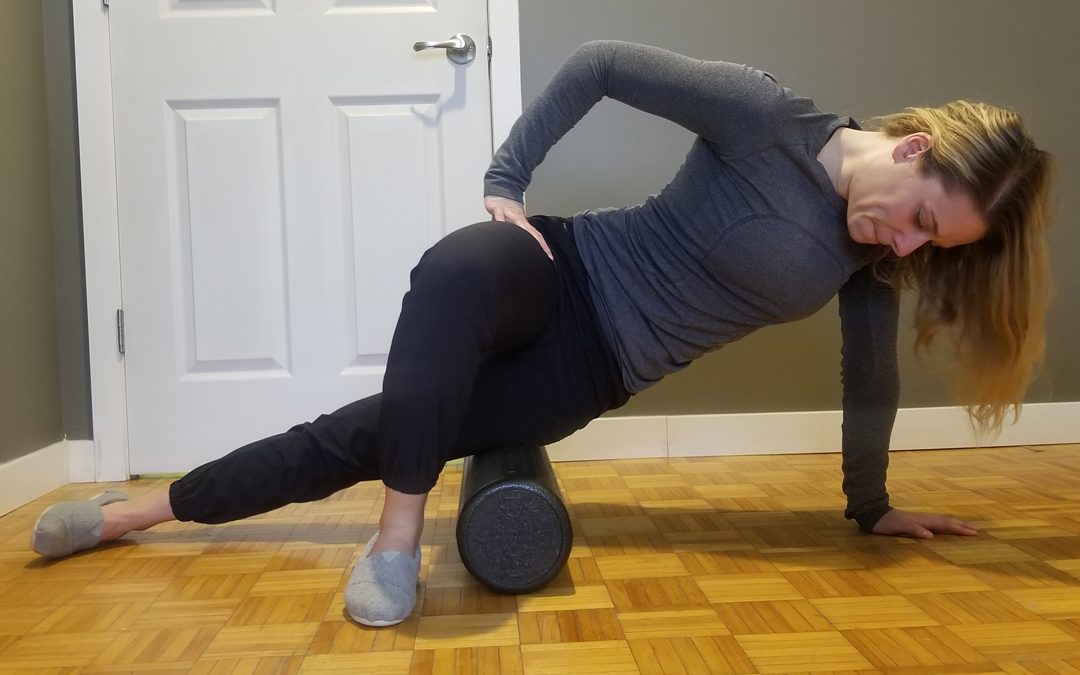I’m here to answer your questions about foam rolling: its benefits, how to use it, and when to use it!
Benefits:
Foam rolling can be a great tool to relieve tension and tightness in muscles and fascia. Applying pressure to certain tension points can break up adhesions in the muscle and can help improve blood flow to the area, creating a healing and lengthening effect to the tissue.
How to foam roll:
Foam rolling should be used on muscles, not on bones or joints. It can be used on multiple areas of the body, including the quads, hamstrings, calves, glutes and upper back muscles.
Here are a few techniques you can try at home:
Quad: Lie facing the ground with upper leg on the foam roller and gently roll up and down along the muscle

Hamstrings: sitting down, place the foam roller on the top part of your leg, lift your body up using your hands and roll along the muscle

Calves: like the hamstrings, but place the foam roller under the lower part of the legs

Glutes/piriformis (deep glute muscle): Sitting on the foam roller, cross one leg over in a figure 4 position, roll along glute on leg that is crossed. **Be careful rolling the piriformis if you suffer from nerve pain, such as sciatica and piriformis syndrome, since the sciatic nerve can run through this muscle

Upper back: Lie with your upper back on the foam roller and roll up and down along the spinal muscles

For the quads, hamstrings and calves, you can roll both at the same time or focus on one leg at a time. I recommend focusing on one at a time.
How to roll the IT band:
Many individuals roll the IT band improperly, which can cause pain or irritation. It is important to understand that the IT band is NOT a muscle, but fascia, a connective tissue with little elasticity. Most IT band pain either comes from the muscle it is attached to, the TFL muscle located on the front of your hip, or from its attachment with the hamstring and the quad. Because of this, you should be rolling at its insertion points associated with the muscle, and not directly on the IT band.
- Quad insertion: like quad rolling, but lying slightly on your side

- Hamstring insertion: like hamstring rolling, but again, lying slightly on your side

- TFL ball rolling: in order to roll in the TFL muscle, use a ball, not a foam roller. To find out where to place the ball, find your hip bone and slide out to the side into the muscle. This should be done against a wall, because is much easier to control the pressure you are applying.

Roll for about 10x in each area, if there is an area that feels tighter, sit in that position for about 20seconds
When to foam roll:
Foam rolling needs to be accompanied by stretching and strengthening. It is a very common for people to ONLY focus on foam rolling and neglect the fact that muscles need to also be stretched and strengthened. Foam rolling can be done once a day or after intense work outs. If you are more sore after foam rolling, it is possible you are either going too aggressive or foam rolling too often and for too long.
Get your foam rollers out and loosen those muscles!




Recent Comments